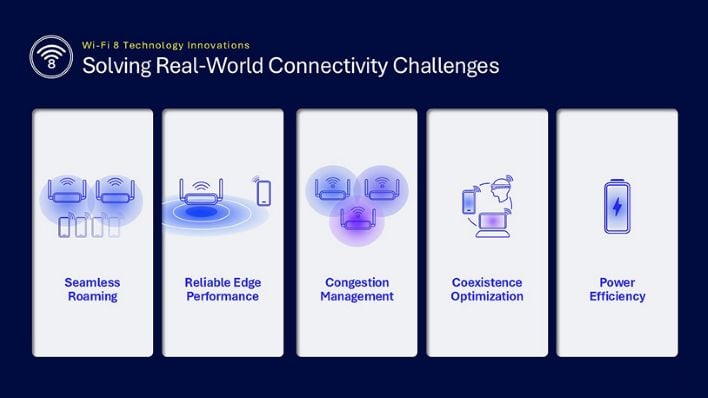Qualcomm Teases Big Wi-Fi 8 Speed, Latency And Reliability Uplifts
For years, each new iteration of Wi-Fi—from 5 to 6 to 7—has been defined by a race to present an ever-increasing jump in theoretical speed. Sure, such advancements have been important, but they brought with them real-world performance issues such as unstable/dropped connections, high latency, and inconsistent speeds in congested environments. Thus, Wi-Fi 8 aims to shake the boat a little. That said, speed is still a point of focus too, though more indirectly this time (more on that in a moment).
Qualcomm, a major player in the development of this new standard, highlights that Wi-Fi 8 is designed to meet the evolving demands in tech that incorporate the rise of AI-driven systems, augmented reality, and mission-critical applications in densely populated enterprise and industrial settings. In these scenarios, it has become crucial to have seamless, low-latency, and near-lossless wireless connectivity.

The initiative's goals involve a 25% improvement across three key metrics: real-world data throughput in challenging conditions where Qualcomm is claiming "at least" a 25% boost, reduced latency at the 95th percentile, and fewer dropped packets (all of which will be a huge boon for virtual meetings, cloud gaming, and industrial automation, to name a few). Ideally, this means that a device at the edge of its network's range will still be able to maintain a fast and stable connection, and that users moving between access points won't experience frustrating interruptions. So that's where the bulk of the speed gains will come from, though the bigger focus is on reliability.
To make these all possible, Wi-Fi 8 will introduce a bunch of new features. For example, there's Coordinated Spatial Reuse and Coordinated Beamforming, which allow multiple APs to work together more intelligently in crowded spaces. Dynamic Sub-Channel Operation will enable more efficient use of available bandwidth, plus Modulation Coding Schemes that should boost performance in poor signal conditions.
Wi-Fi 8 will continue to operate across the 2.4GHZ, 5GHz, and 6GHz bands and support up to eight spatial streams, but it's good to see the intentional focus on consistency over peak speeds, which is more in-line with how people actually use wireless networks today (and the next few years) anyway.

